A look back at 2016 Monroe County results, 2020 early voting continues at 100 voters-per-hour pace
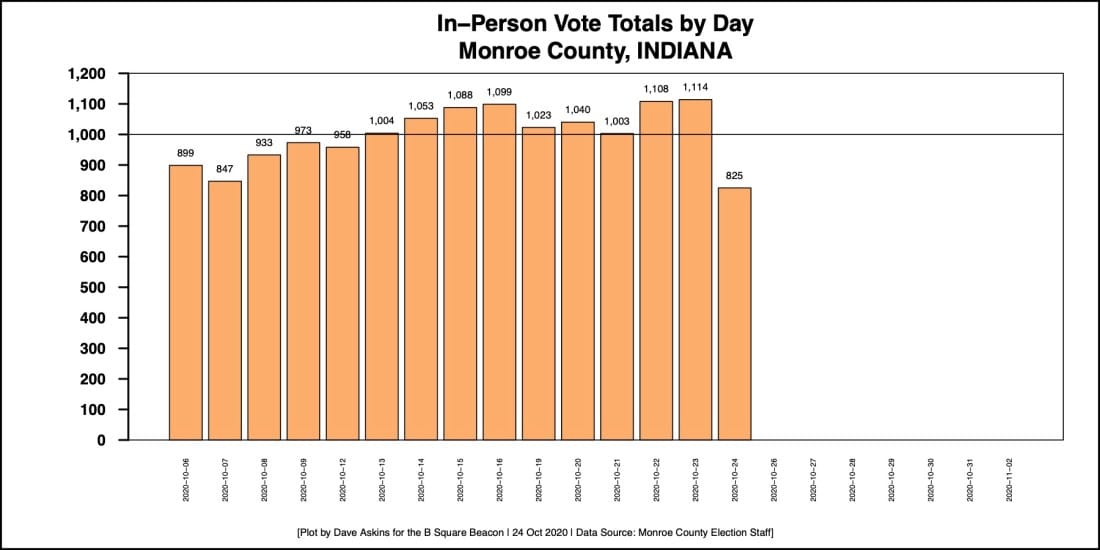

Saturday’s early in-person voting total in Monroe County was 825.
That daily total was the smallest number so far in the first three weeks of early voting. But that’s because it was the first day of Saturday voting, which offers just seven hours of voting time.
Saturday’s pace of around 118 voters per hour was the highest throughput of any day so far.
Early voting takes place at just one location, Election Central, at 7th and Madison streets in downtown Bloomington.
Based on the roughly 15,000 early in-person voters so far, and the remaining hours of in-person early voting that are available, around 21,000 people might be expected to have voted in person before Election Day on Nov. 3.
Last week’s number of mail-in absentee ballots requested was put at around 14,000 at last Tuesday’s meeting of the election board.
If voter turnout this year matches the numbers from 2016, which was the most recent presidential year election, that would mean just shy of 60,000 voters.
Peeling off this year’s early in-person and mail-in numbers from 60,000 would still leave at least 25,000 people voting on Election Day. They would be casting their ballots at one of the 28 polling locations around the county where they are assigned to vote.
On average that would mean every polling site on Election Day would be handling around 890 voters over the 12-hour voting period. That works out to about 74 voters per hour.
But that’s if the same number of voters turn out this year as last year. It could be a lot more. For every 1,000 additional Monroe County voters who cast a ballot this year, the 28 polling sites will need to handle another three voters per hour.
While in-person voting participation numbers can help anticipate the number of voters who might cast a ballot on election day, it would likely require an extra layer of analysis to guess at what those numbers might mean for the outcome of some local races.
A look back at 2016 general election results serves as a reminder of the political geography of Monroe County.
2016 US President, Congress, Straight Party
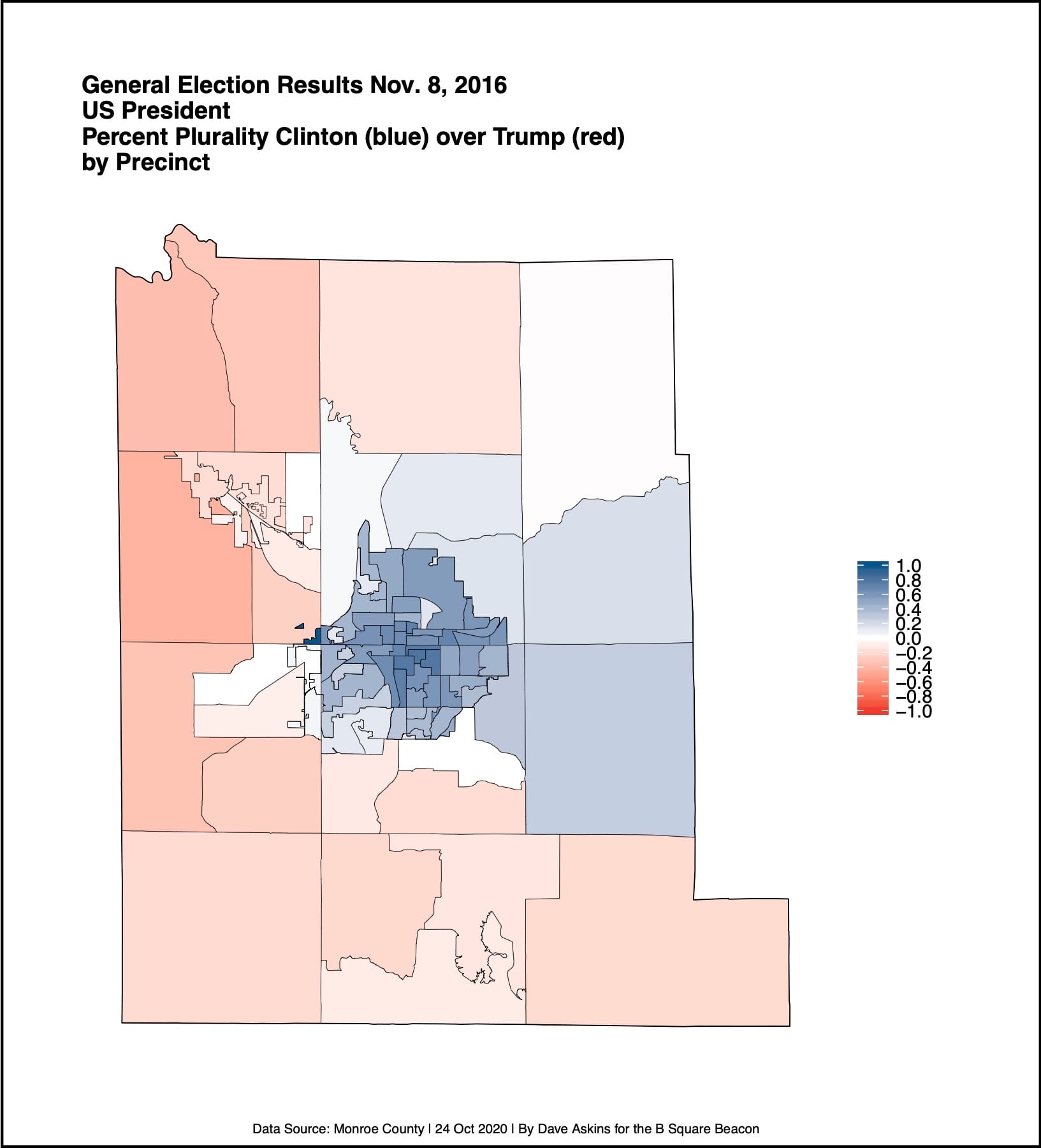
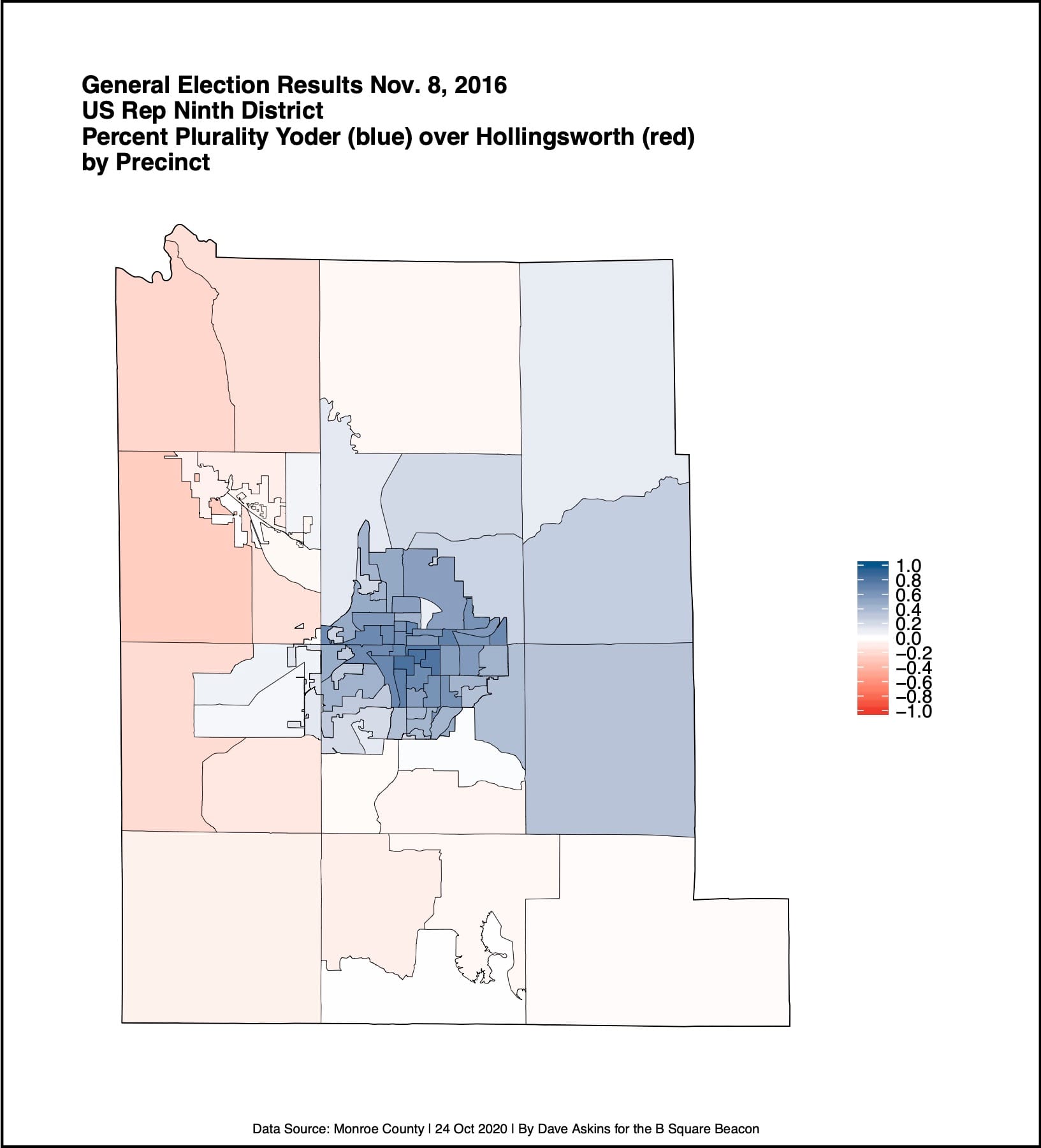
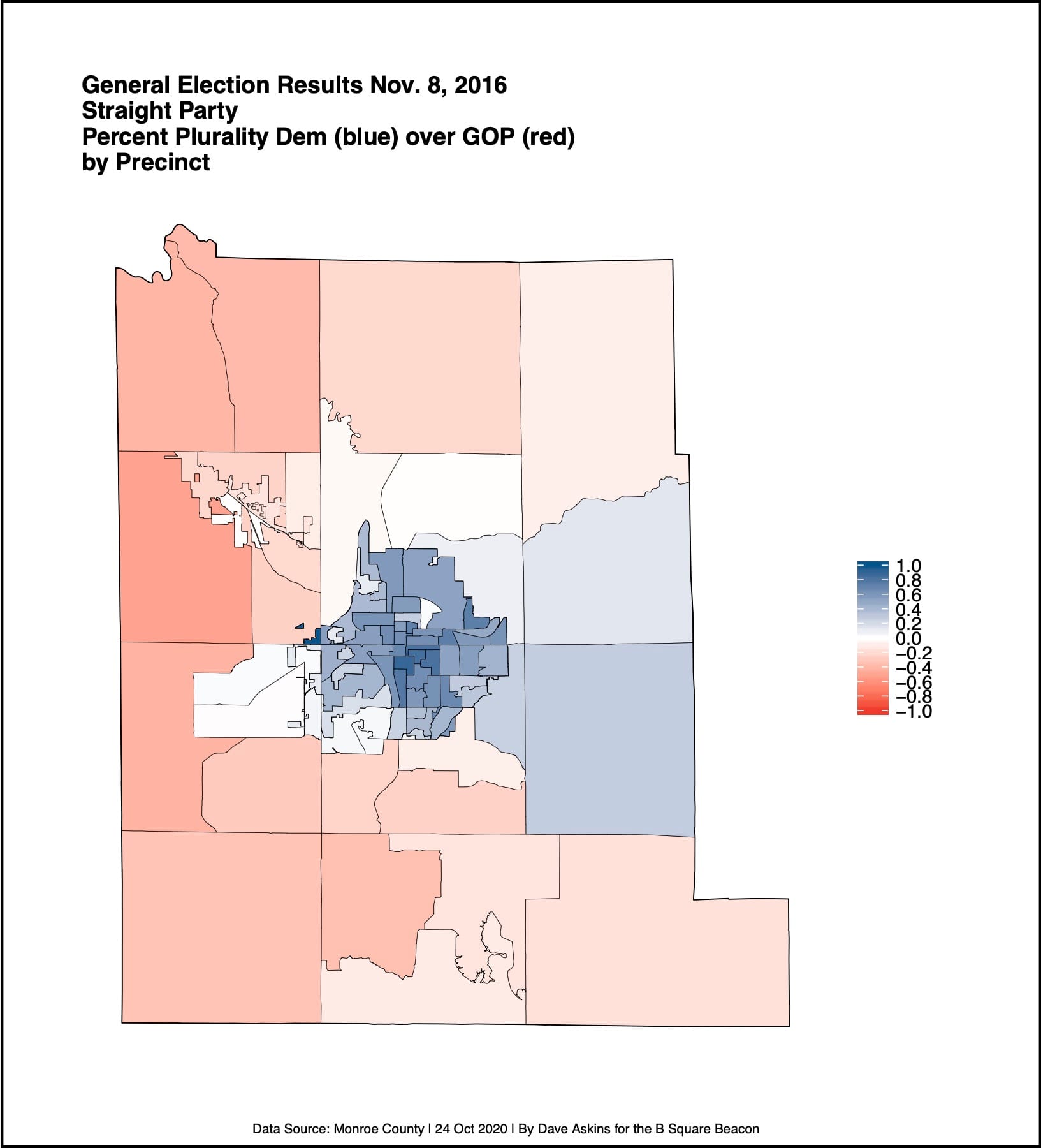
Around one-third of voters in 2016 chose a straight-ticket for some party. The split among those who voted straight-ticket was about 60 percent Democratic Party, 32 percent Republican Party and 2 percent Libertarian Party.
That split roughly paralleled the vote in Monroe County in the race for U.S. president. Democrat Hillary Clinton drew 58.6 percent of the Monroe County vote, compared to Donald Trump’s 35.2 percent.
Shelli Yoder, the Democratic Party candidate for the 9th Congressional District in 2016, did 3 points better than Clinton in Monroe County, polling 62 percent, compared to 33 percent for Republican Trey Hollingsworth.
Yoder’s advantage in Monroe County was not enough to make up for Hollingsworth’s better showing in the rest of the district. She lost the race to Hollingsworth by 14 percentage points (54 to 40 percent)
Besides winning the race outright, one measure of success for Democratic Party nominee Andy Ruff’s campaign against Hollingsworth could be how his percentage stacks up against Yoder’s in 2016.
2016 County Council at Large
For the county council vote-for-three races, what’s plotted is the difference between a candidate’s percentage and the fourth-place candidate’s percentage (orange). If the candidate was the fourth place candidate, then the plot reflects the difference between the candidate’s percentage and the third-place candidate’s percentage (gray).
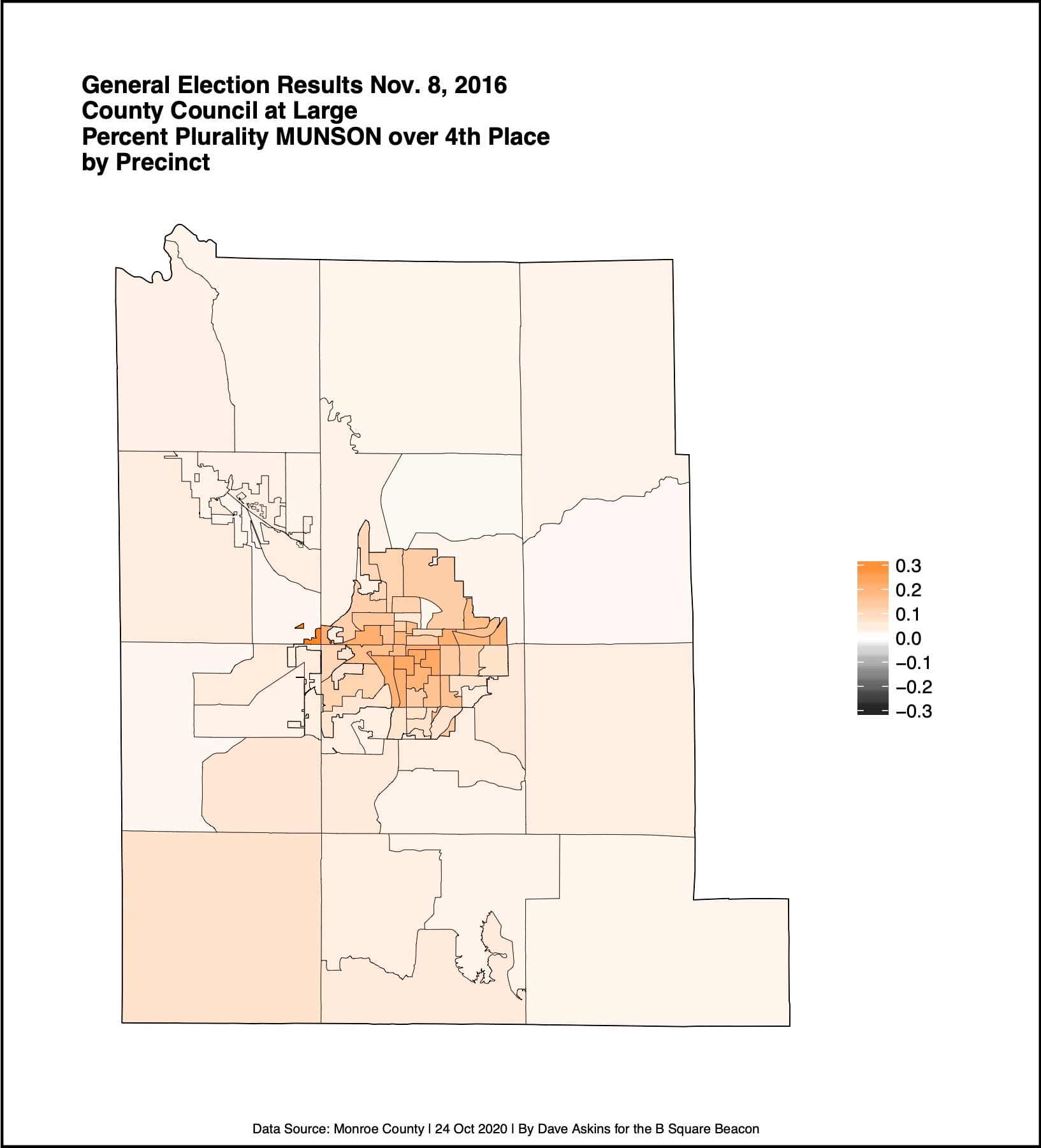
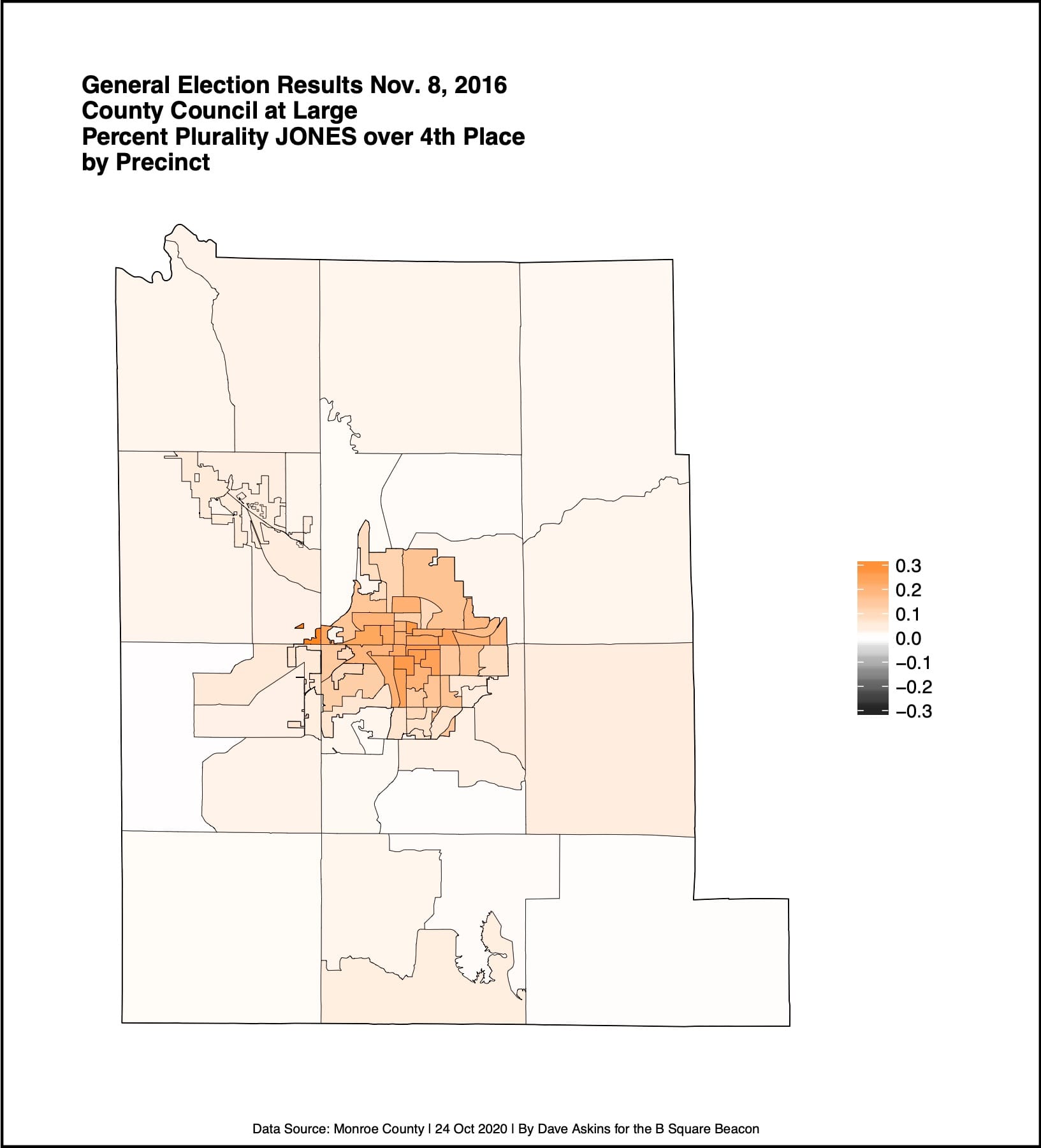
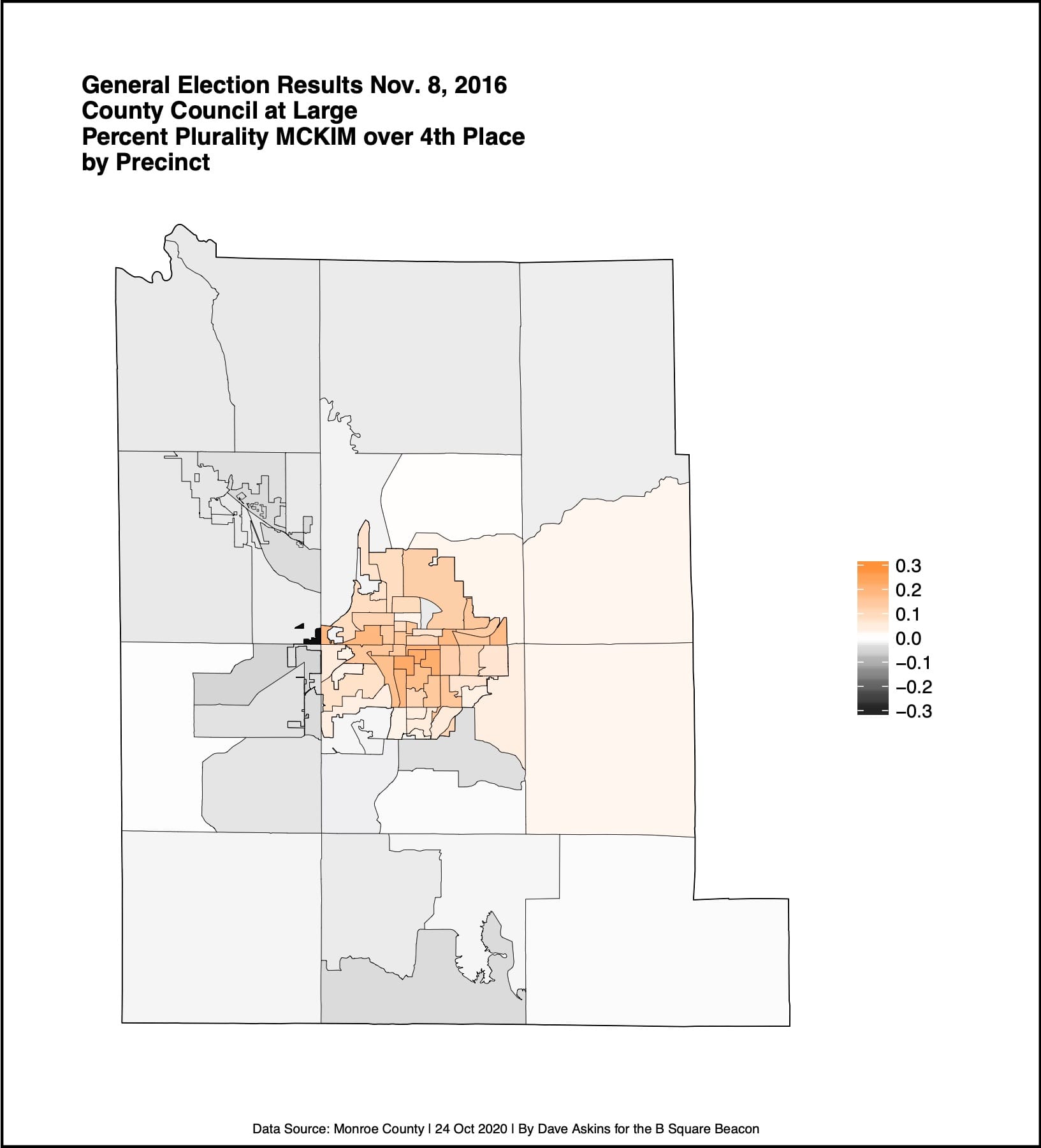
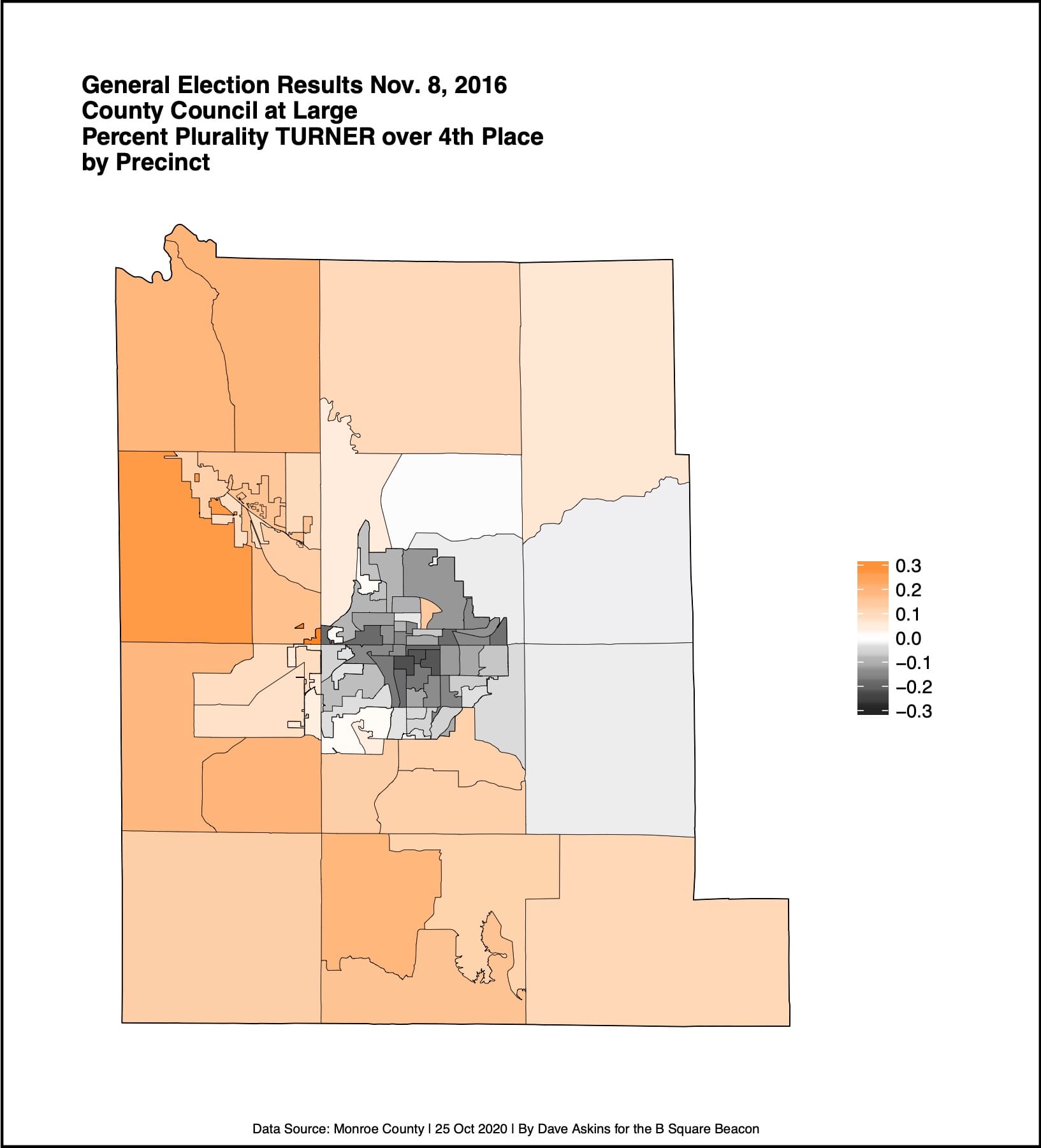
The races for at-large county council don’t necessarily reflect the same straight-party split as other races, because they are vote-for-three races. It’s a recently added quirk of Indiana election law that in such races—where voters can choose up to three candidates, with the top three vote getters winning election—straight-ticket votes don’t apply.
It’s still easy enough to vote just for Ds and Rs because they’re listed out on the ballot next to each candidate’s name. Still, every vote cast for city council at-large candidates has to be logged manually.
That means the number of undervotes for the county council race race in 2016 was considerable. Compared to the number of votes for county council at-large spots that would have been tallied, if every voter had chosen three candidates, the 2016 total fell about 75,000 short. That works out to around 25,000 voters, or nearly 40 percent, who didn’t vote for anyone in a county council race.
In the 2016 election, Democrats Lee Jones and Cheryl Munson cruised to comfortable wins. Jones had 27.6 percent of the votes and Munson was 1 percentage point behind that.
Democrat Geoff McKim was almost 4 percentage points off first place, with 23.7 percent. The sole Republican on the ballot, Hal Turner, was another 1.7 percentage points behind McKim with 22 percent of the vote. In raw numbers, McKim had 22,779 compared to Turner’s 1,754 votes.
This year, Munson and McKim appear again on the ballot. Replacing Jones for the Democrats is Trent Deckard. Two Republicans appear on the ballot this year—Jim Allen and Larrin Wampler. Also a candidate in the county council at-large race is a registered write-in, Janna Arthur. She spoke a several public meetings over the summer in support of reduced policing and reduced funding for law enforcement.
2016 MCCSC School Board
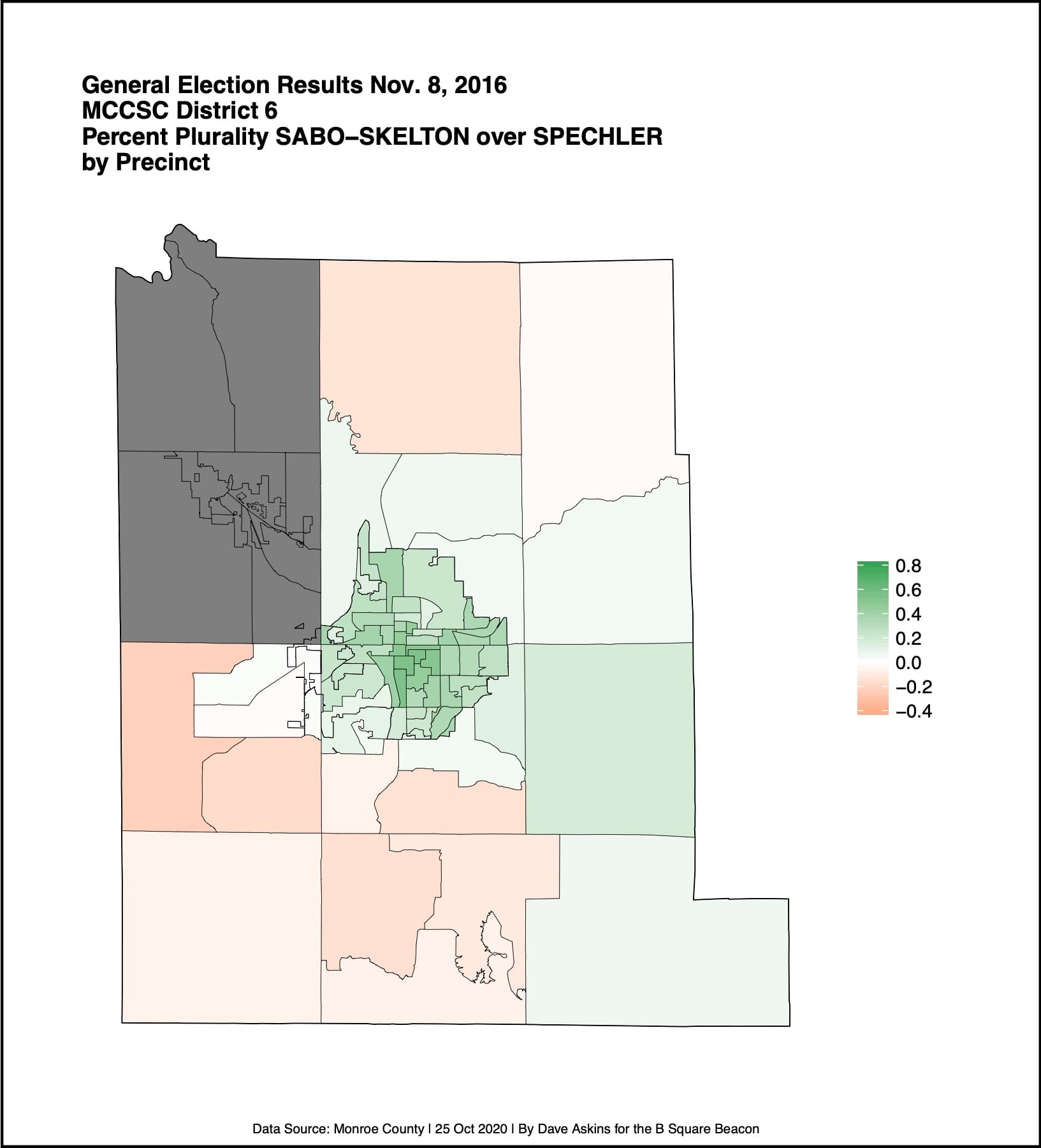
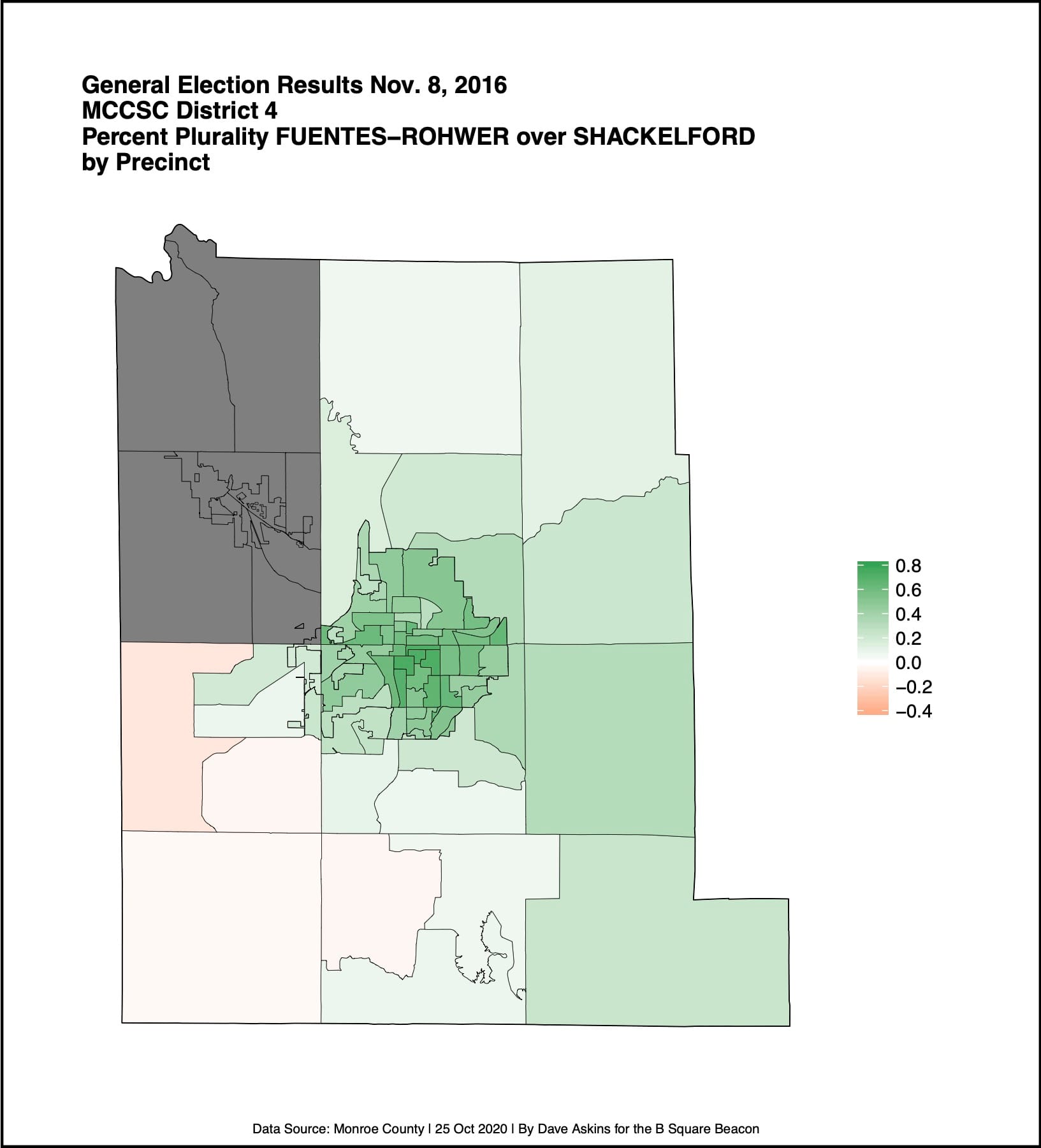
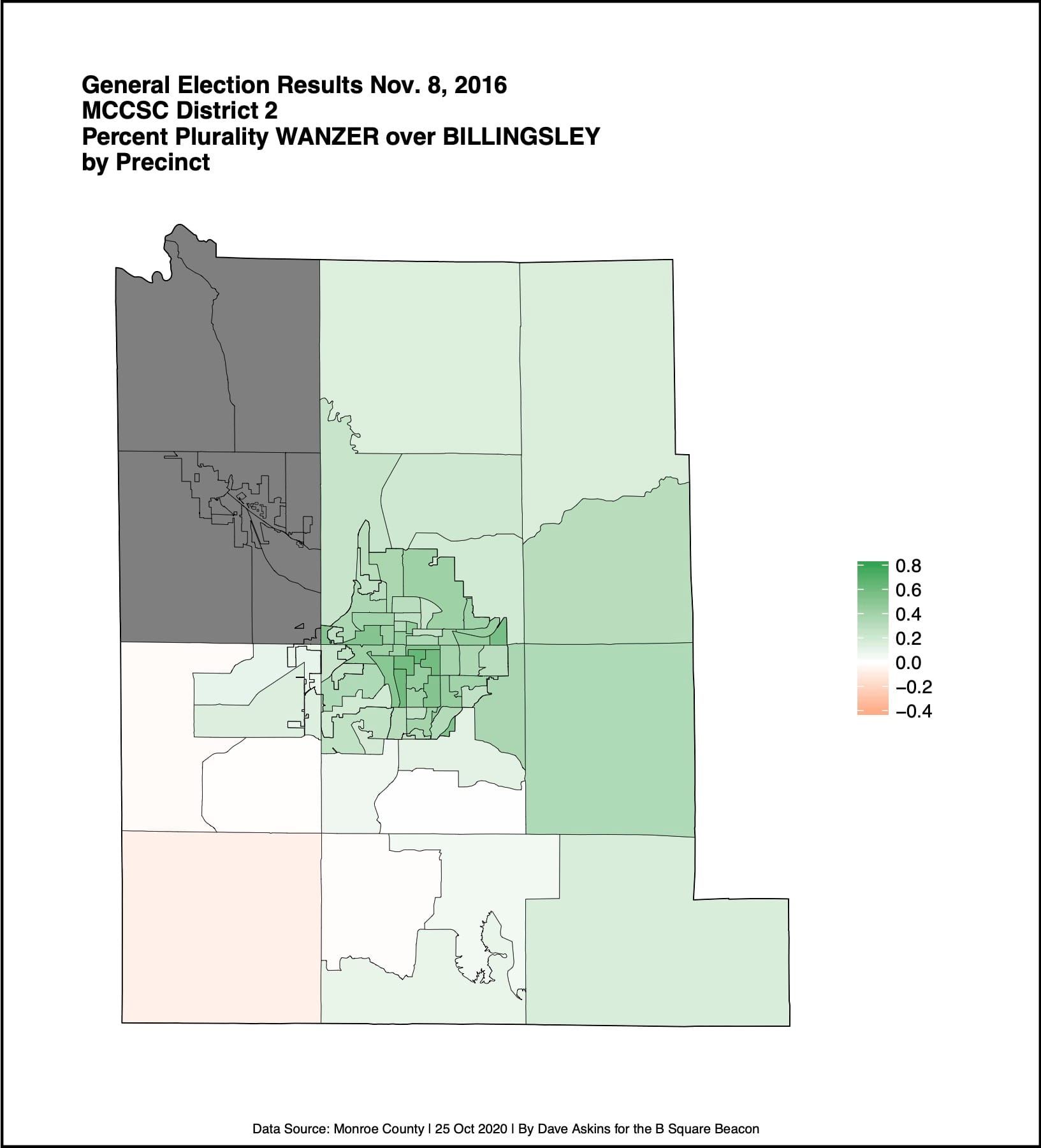
School board races are non-partisan. So they’re susceptible to the same kind of undervoting pattern as at-large county council races. Voters who just check the straight-ticket box and hand in their ballots wind up voting for neither county council at-large races nor school board races.
Just three of the races for Monroe County Community School Corporation board were contested in 2016, the same as this year. Keith Klein’s race for the District 5 seat is uncontested.
Sue Wanzler is seeking to serve again in the District 2 seat. Also seeking to serve in that district are April Hennessey and Matthew Smith. In 2016, Wanzer outpolled Jim Billingsley by 64 to 36 percent.
Cathy Fuentes-Rohwer is seeking to serve again in the District 4 seat. Also seeking to serve MCCSC in that board seat is Marsha Lovejoy. In 2016, Fuentes-Rohwer prevailed over Jim Shackelford with 68 percent of the vote compared to Shackelford’s 32 percent.
The District 6 incumbent this year, Jacinda Townsend Gides, was not on the ballot in 2016. She was the appointed replacement for Lois Sabo-Skelton, who resigned. In addition to Townsend Gides, Philip N. Eskew, Jr. is seeking election to the District 6 seat this year.
In 2016, Sabo-Skelton prevailed over Marty Spechler with 59 percent of the vote, compared to Spechler’s 41 percent.




Comments ()